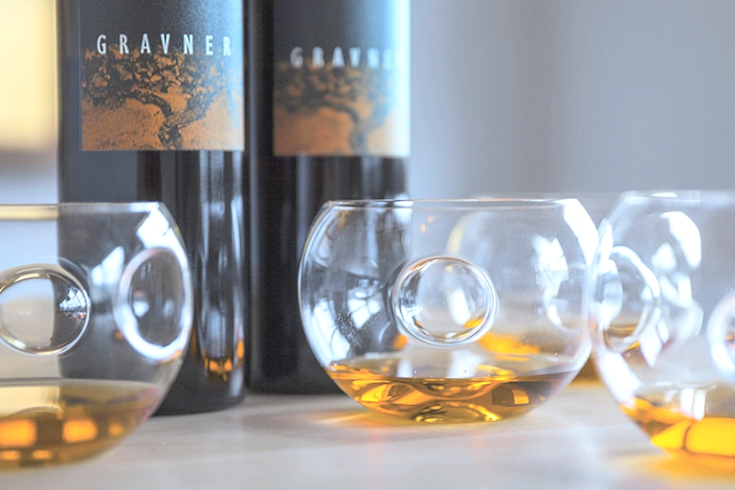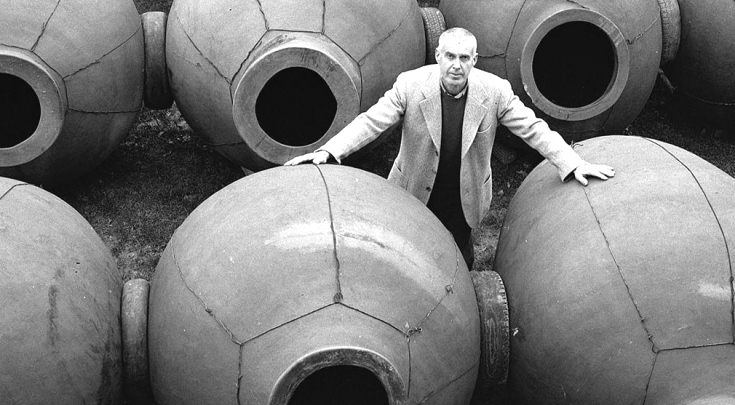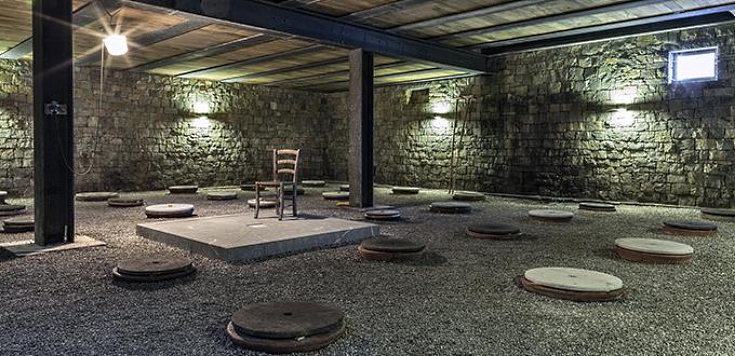
Josko Gravner is known as an innovator who drastically changed wine-making in Oslavia, (in Friuli-Venezia Giulia, Northern part of Italy) and its “orange wine” movement has spread all over the world. Among all the iconic Italian natural wine producers (like Dario Princic, Paolo Vodopivec, Angiolino Maule), Gravner is deified. Gravner is also the only person who is acknowledged by Gianfranco Soldera as a great white wine producer.
His family had produced ordinary table wines and sold to others. When he took over the estate from his father, he was enthusiastic and began to implement many new technologies. He was one of the first producers who bought a stainless tank in this area and he produced clean and crisp wines from Chardonnay, Sauvignon, Pinot Grigio and so on. And then, he began to use barriques and tried to model after “Burgundy” with his neighbours such as Stanko Radikon. They tried changing to large wooden vats and tried maceration (skin contact) for white wine too. In the vineyards, he began to devote natural cultivation (especially Masanobu Fukuoka) and he reached to No-till farming (Nontillage cultivation).
On their quest, they encountered Georgian wine, which impressed them greatly. They desired to visit Georgia, but Georgia was part of the Soviet Union at that time, making it difficult to visit. The Soviet Union collapsed in 1991, but a civil war continued in Georgia. Therefore, Josko Gravner could not approach Georgia at that time. And then, he could finally step into Georgia in May 2000. Georgia has a long history of wine-making since 8000 B.C., and it has been produced by Qvevri (amphora, a large clay pot) buried underground. When Josko Gravner went back to Oslavia, he cleaned up all the equipment and buried Amphorae underground, then he produced the first "Amphorae wine" in 2001.
The white wines are made from Ribolla (as a sigle variety wine) and Chardonnay, Sauvignon, Pinot Grigio and Riesling Italico(these four are blended, named Breg. This marked the last vintage in 2012, and production has ceased). While fermenting in the Georgian amphorae buried underground, it underwent a long maceration with grape skin (so called skin contact), fermented by wild yeasts under no temperature control. After the drawing off and pressing phases the wine was poured back into amphorae for at least five more months before it started ageing in large oak barrels, where it was left for six years. Wine is bottled during the waning moon, without fining or filtration.
|
|
GRAVNER Glass by Massimo Lunardon
- Glass capacity: 600ml
- Opening diameter: 95mm approx.
- Maximum diameter: 120mm approx.

The idea to create a wine glass in the shape of a cup occurred to me in the year 2000 during my visit to the Caucasus. While travelling in Georgia, seeking amphorae that I was to bury in my wine cellar, I happened upon a monastery in the hills of Tbilisi. The monks welcomed me with polyphonic praise of wine, which they then offered me in a simple clay cup. Savouring wine from a cup was a different experience. I now feel that it is more intimate, simpler, humbler, and more respectful of the wine than drinking from a stemmed glass. (15th, 2011 Josko Gravner)
One day, Josko Gravner was also impressed by glassware made by Massimo Lunardon in the restaurant, and he immediately visited Massimo's atelier. Massimo Lunardon perfectly understood what Josko Gravner wanted, and they reached a consensus to make a special wine glass right away. This glass is provided only to the official agent of Gravner.
The aroma and taste are as they are; wine floats gracefully in the palm.
- Beautiful Curved Line -
In the Gravner Glass, your wine relaxes in a large, round shape defined by beautiful curves, revealing its characteristics without bias, exaggeration, or deformation. Originally, this glass was specially crafted for Gravner wines but can also be used for any white, red, or rosé wine, as well as Champagne and saké.
- Stemless -
Gravner glasses have no stem, allowing the wine to be held closer to the hand. This creates a unique drinking experience, as it feels more like drinking wine from the palm. Additionally, without a stem, there is a reduced risk of breakage—addressing one of the weaknesses of traditional wine glasses. These glasses are also easy to carry, making them ideal for outdoor events or BYO (bring your own) occasions.
- Pieces of Modern Art. Hand-Blown by Massimo Lunardon -
Glass artist Massimo Lunardon produces this glass piece by piece using hand-blown techniques. It's a piece of modern art, designed for practical use. Every piece has a slightly different size and shape.


|
|
|